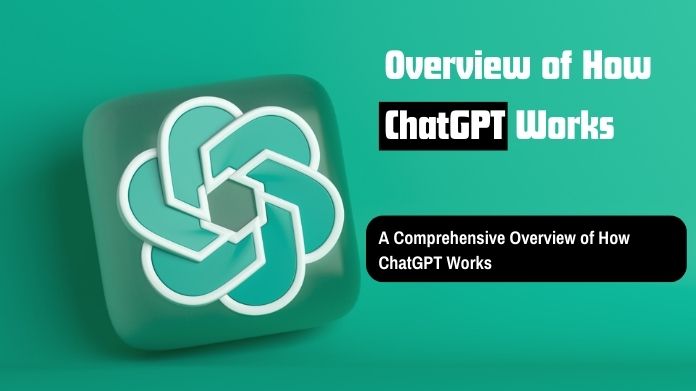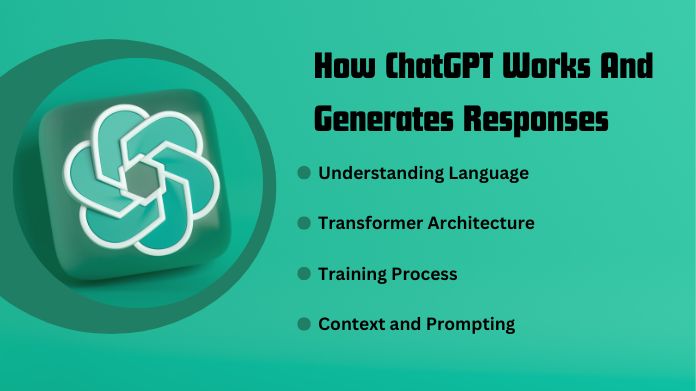A Comprehensive Overview of How Chat GPT Works
Techno Guide's Blog

OpenAI created the sophisticated language model known as Chat GPT. It is a potent tool for natural language interpretation and creation since it uses the GPT-3.5 architecture to produce human-like responses to text questions.
Understanding Chat GPT's internal operations is crucial for identifying its advantages and disadvantages. Because sometimes, it happens that users go through Chat GPT not working problems. Suppose you are also one of those. The mentioned guide will help you with this problem.
Apart from that, we shall give an in-depth discussion of ChatGPT's operation in this post, covering everything from its training procedure to its underlying architecture and applications.
What is Chat GPT?
OpenAI created the artificial intelligence language model Chat GPT. The architecture it is built on is called GPT-3.5, or "Generative Pre-trained Transformer 3.5." A cutting-edge model called GPT-3.5 uses deep learning strategies to produce human-like responses to text prompts.
Chat GPT was created to be a conversational tool that can interact with users by answering their questions, sharing knowledge, and having natural-language dialogues.
It can produce logical and appropriately contextualized responses because it has been trained on a sizable amount of heterogeneous text material from the internet.
Applications of Chat GPT
There are multiple uses for Chat GPT in different industries. It can be used in virtual personal assistants to conduct natural conversations, in customer support systems to offer automated assistance, and in content production tools to help produce written material.
Additionally, Chat GPT can be utilized in the classroom to assist students with their inquiries and provide clarification on various subjects. Additionally, it can be used in chatbots, interactive narrative software, and language translation services.
Chat GPT has a wide range of possible applications, and its adaptability makes it a useful tool for optimizing user experiences and boosting productivity in various industries.
How Chat GPT Works And Generates Responses?
As soon as a user sends Chat GPT a text prompt, the model tokenizes the text prompt and runs it through its architecture. Each token stands for a distinct semantic unit, such as a word or a subword.
The encoder then decodes the data in the prompt using the tokens that were previously provided to it. The model uses its decoder to produce a response after encoding the prompt.
The decoder determines the most likely next token at each step using the encoded data and its internal state. This process continues until the response reaches the predetermined maximum length or generates an end token.
Chat GPT does not produce responses predictably. Instead, it adds a degree of randomness, diversifying the produced outputs. The model takes a sample from its probability distribution at each step, allowing for various replies to the same stimulus.

Understanding Language
The deep learning foundation on which ChatGPT is based gives it the ability to comprehend and produce human language.
It has learned patterns, syntax, and semantic correlations between words and phrases through training on a vast amount of text material from the internet, books, and other sources.
Transformer Architecture
Transformers, a particular class of neural network model created for tasks related to natural language processing, provide the foundation of Chat GPT's internal architecture.
Transformers comprise several layers of self-attentional mechanisms that allow the model to evaluate the relative relevance of various words and the relationships between them in a sentence or document.
Training Process
Training Pretraining and fine-tuning are the first two steps of Chat GPT. The model learns to anticipate the following word in a sentence during pretraining after exposure to a vast text corpus. The model gains a general comprehension of language through this approach.
The model is subsequently trained on a more specialized dataset during the fine-tuning phase. This dataset is carefully created with the aid of human reviewers.
These reviewers evaluate and rank potential model outputs for various example inputs by adhering to the OpenAI principles. The model's performance is enhanced and brought into line with human values thanks to this iterative feedback loop.
Context and Prompting
For ChatGPT to produce the right responses, context is extremely important. The entire dialogue history is considered, including the user's input and the model's prior responses. ChatGPT strives to offer responses that are logical and pertinent by taking the context into account.
It is crucial to remember that ChatGPT does not retain a chat record after a certain number of tokens. As a result, it occasionally may give answers contradictory to their context or forget prior conversation sections.
Conclusion
OpenAI created a potent language model called ChatGPT. Based on input, it produces responses that resemble those of a human being and has undergone considerable training to learn patterns and context.
It has limitations, though, and can deliver inaccurate or biased results. To increase the model's knowledge and accuracy, OpenAI is constantly making improvements.
Despite obstacles, ChatGPT has the power to transform several applications. Responsible deployment and ethical issues are crucial. ChatGPT is a huge step forward in natural language processing, opening the door for future developments in human-machine interaction.